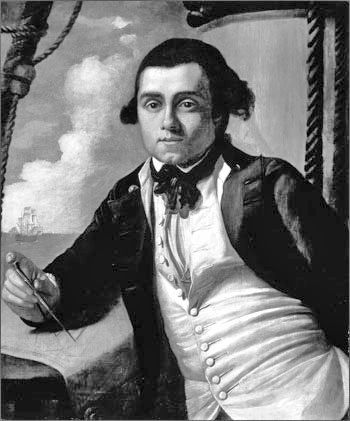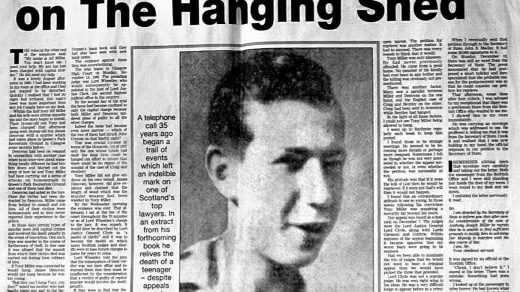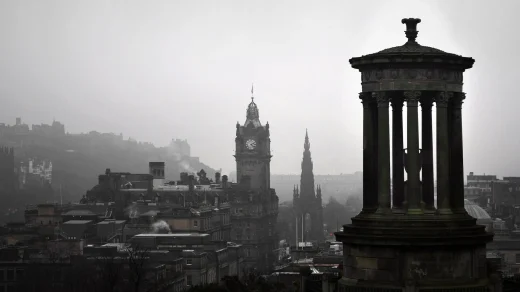The complement of HMS Bounty, the Royal Navy ship on which a historic mutiny occurred in the south Pacific on 28 April 1789, comprised 46 men on its departure from England in December 1787 and 44 at the time of the mutiny, including her commander Lieutenant William Bligh. All but two of those aboard were Royal Navy personnel; the exceptions were two civilian botanists engaged to supervise the breadfruit plants Bounty was tasked to take from Tahiti to the West Indies. Of the 44 aboard at the time of the mutiny, 19 (including Bligh) were set adrift in the ship’s launch, while 25, a mixture of mutineers and detainees, remained on board under Fletcher Christian. Bligh led his loyalists 3,500 nautical miles (6,500 km; 4,000 mi) to safety in the open boat, and ultimately back to England. The mutineers divided—most settled on Tahiti, where they were captured by HMS Pandora in 1791 and returned to England for trial, while Christian and eight others evaded discovery on Pitcairn Island.
The Admiralty rated Bounty as a cutter, the smallest category of warship—this meant that she was commanded not by a captain but by a lieutenant, with no other commissioned officers aboard, and without the usual detachment of Royal Marines that ships’ commanders could use to enforce their authority. Directly beneath Bligh in the chain of command were his warrant officers, appointed by the Navy Board and headed by the sailing master John Fryer. The other warrant officers were the boatswain, the surgeon, the carpenter, and the gunner. Two master’s mates and two midshipmen were rated as petty officers; to these were added several honorary midshipmen—so-called “young gentlemen” who aspired to naval careers. They signed on the ship’s roster as able seamen, but were quartered with the midshipmen and treated on equal terms with them.

Captain William Bligh.
Most on Bounty were chosen by Bligh, or were recommended to him. However, a draft list of the crew before the voyage includes several who did not sail, including two pressed men who are thought to have deserted. Of the eventual crew, William Peckover, the gunner, and Joseph Coleman, the armourer, had been with Bligh when he was Captain James Cook‘s sailing master on HMS Resolution during the explorer’s third voyage (1776–80). Several others had sailed under Bligh more recently, including Christian, who had twice voyaged with Bligh to the West Indies on the merchantman Britannia. The two had formed a master-pupil relationship through which Christian had become a highly skilled navigator; Bligh gave him one of the master’s mate’s berths on Bounty, and in March 1788, promoted him to the rank of Acting Lieutenant, effectively making Christian second-in-command. Another of the young gentlemen recommended to Bligh was 15-year-old Peter Heywood, a Manxman and a distant relation of Christian’s. His recommendation came from Bligh’s father-in-law, who was a Heywood family friend.
The two botanists, or “gardeners”, were chosen by Sir Joseph Banks, the president of the Royal Society and the expedition’s chief promoter. The chief botanist, David Nelson, was another veteran of Cook’s third voyage and had learned some of the Tahitians’ language. Nelson’s assistant, William Brown, was a former midshipman who had seen naval action against the French. Banks also helped to secure the midshipmen’s berths for two of his protégés, Thomas Hayward and John Hallett. Overall, Bounty‘s crew was relatively youthful, the majority being under 30. At the time of departure Bligh was 33 years old and Fryer a year older. Among the older crew members were the gunner, William Peckover, who had sailed on all three of Cook’s voyages, and Lawrence Lebogue, formerly sailmaker on the Britannia. The youngest aboard were Hallett and Heywood, who were both 15 when they left England.




NICE POST 🎄🎁🎄🎁🎄
I hope that during this year, TOGETHER WE GROW, reading each other, giving “like” and commenting on our respective publications.
ALL THE BEST FOR THIS 2024 AND MAY IT BE FULL OF BLESSINGS 🙏💫
Greetings from 🇪🇸
Happy new Year friend.